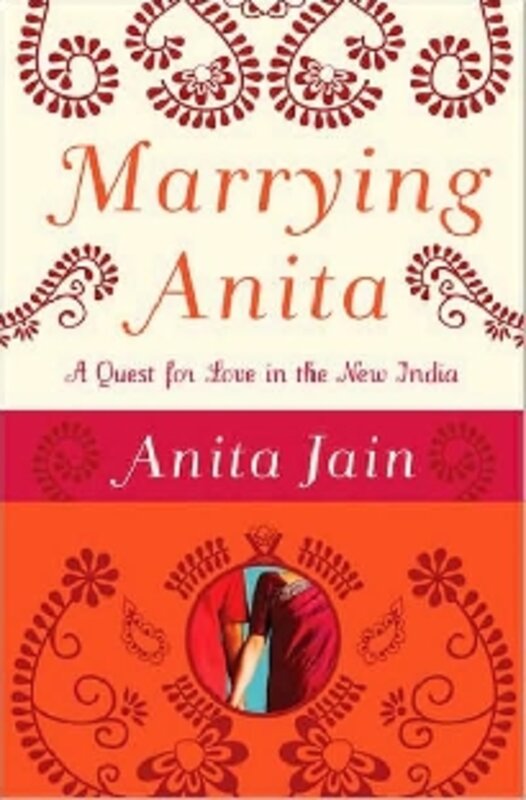Marrying Anita
Loading...
At 32, Anita Jain is an object of pity. Never mind her Harvard degree and a journalism career with its expat adventures in far-flung destinations such as London, Mexico City, and Singapore. Ask any auntie or uncle, and they will most assuredly shake their heads at “Naresh’s daughter who is still unmarried.”
Naresh – said father of the pitiable girl – has regularly been placing matrimonial ads on his daughter’s behalf since her 20s: “They read something like, ‘Match for Jain girl, Harvard-educated journalist, 25, fair, slim.’” (Jain is both the family’s religion and last name.)
Her mother, meanwhile, has been worried since her daughter fell out the window of a three-story building at age 1: “My mother’s greatest concern at the time, after learning that I hadn’t been gravely injured, was my marriageability. ‘What boy will marry her when he finds out?’”
So what’s an accomplished woman to do under such pressure? In Jain’s case, she relocates to the land of her immigrant parents to search for that elusive mate. And, in contemporary full-disclosure fashion, she writes a rollicking memoir: Marrying Anita: A Quest for Love in the New India.
Although the child of a blissfully happy arranged marriage, Jain enjoyed “a rare amount of freedom during [her] twenties to find someone of [her] own choosing.”
Marriage remained the goal: “It would not be a stretch to say that ‘shaadi,’ the word for ‘marriage’ in many Indian languages, is the first word a child in an Indian family understands after mummy and papa. To an Indian, marriage is a matter of karmic destiny.”
Entering her 30s, Jain finds herself in Manhattan, caught up in the nightlife of young professionals, which translates into parties, bars, and forgetful hook-ups. Intimidated by talk of “JDate and booty calls” and other unappealing methods of courtship, Jain eventually succumbs to her father’s Internet dating efforts on her behalf – he not only writes her profile but also screens unsuspecting prospects.
Even as she eschews her father’s updated version of arranged marriage, Jain’s opposition starts to falter: “…after a decade of Juan Carloses, and affairs with married men, and Craigslist flirtations, and emotionally bankrupt boyfriends, and (oddly, the most painful of all) the guys who just never call, [arranged marriage] no longer seemed like the most outlandish possibility.”
India, Jain thinks, holds more options: “I could go in for a strict arranged marriage, an ‘assisted marriage,’ or I could merely date in a pool far more oriented toward marriage than the one I was dealing with in New York City.”
Jain gives herself a year in Delhi to find a husband. In a way, it was a tribute to her parents and their relationship. “[I]t was my father’s own self-taught views on women,” Jain writes, “that had given me hope that I would be able to find a husband in India liberal enough in mind-set and outlook to handle me.”
But the India to which Jain returns in the summer of 2005 is a brave new world that hardly recalls her father’s country of “byzantine tales of indigence.” Twenty-first century India is a behemoth success story filled with booming technology, enviable fashion, world-renowned literature and artists, and ever-present Bollywood glamour.
Setting up her new life is not without hurdles, least of all finding a place to live: After numerous setbacks in finding a flat, Jain comes across a newspaper article which reveals Delhi landlords “suspect young women who can afford a place of their own to be involved in prostitution.”
Jain is nothing if not tenacious, and finally manages to “set up the perfect Indian home by myself in Delhi,” complete with a cook and an insouciant maid who tells her which clothes make her look fat.
Highlights of her year-long mate-search include a long-distance flirtation with a Kashmiri ex-holy man, infatuation with a younger family friend, and initiating a devout Sikh into the joys of kissing.
When her parents come for a six-week visit, her father resorts again to marriage ads – which result in a hopeful online dalliance with a Luxembourg-based consultant and a “livetime” relationship with an IT specialist who studied at her father’s alma mater.
Lest you think Jain’s narrative reads like an amorous laundry list, romance comes with some poignant revelations. Jain journeys to India in search of a husband, yes, but also “a sense of belonging that I haven’t found in the U.S.” Her reverse immigration ironically proves otherwise as she admits: “I look Indian but am not.”
“[My] year in Delhi has thrown me so many curveballs, I should hardly be shocked,” Jain concludes.
“That full-of-possibility, anything-can-happen feel” will eventually cement Jain’s stay. So does she or doesn’t she find true love? No secrets revealed here – just one hint: Skipping to the last page offers no easy answers!
Terry Hong is media arts consultant at the Smithsonian Asian Pacific American Program.





